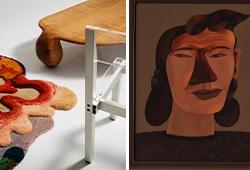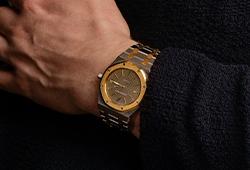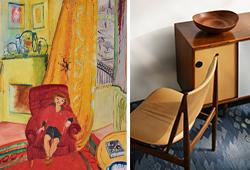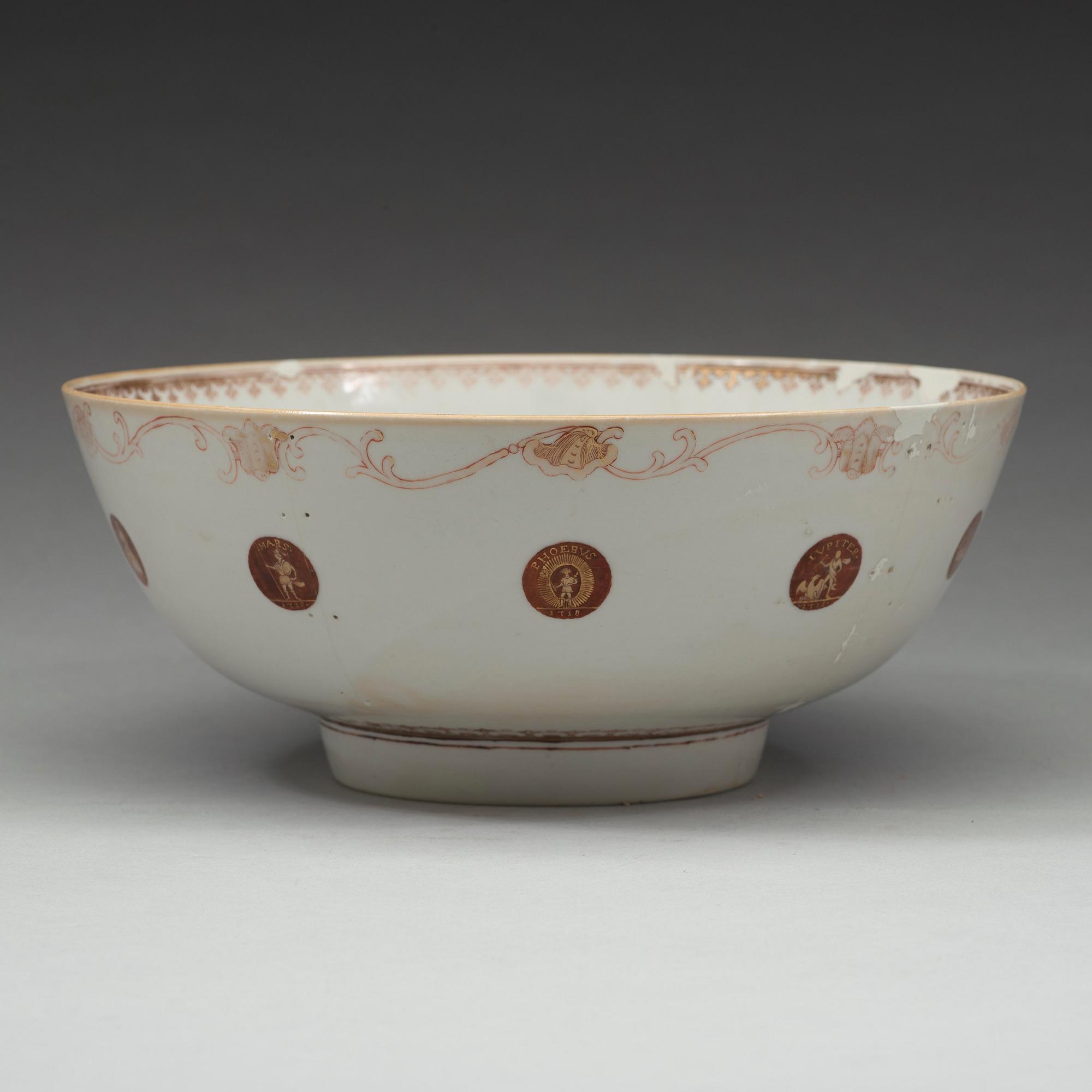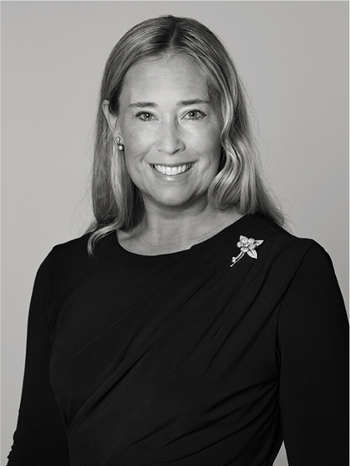BÅLSKÅL, kompaniporslin. Qingdynastin, 1700-talets första hälft.
Dekor i guld och rouge de fer av nödmynt. Diameter 28,6 cm.
Museilagning.
Proveniens
Nödmynten tillverkades under åren 1715-19, då den svenska statskassan var tömd. Till en början påtrycktes morska deviser så som Publica fide, Wett och Wapen, när desperationen ökade ändrades det till romerska gudar, 1719 präglar man myntet med "Hoppet".
Litteratur
D.Howard & J Avers, China for the West.
Gyllensvärd, Porslinet från Kina.
Övrig information
The Swedish East India Company was founded 1731, one of the new commodities that the company brought back a part from large quantities of tea and porcelain was punch. It soon became a popular drink amongst men, and large quantities of punch bowls were commissioned to meet the demands.
It had long been a popular fashion to mount commemorative medals and coins on silver tankards and other drinking vessels. So the step to use coins and bank notes as decoration on porcelain was not far when the possibilities to have items custom made in China.
During the late 1730’s the interest in the diseased Swedish King Carolus XII politics and wars escalated.










